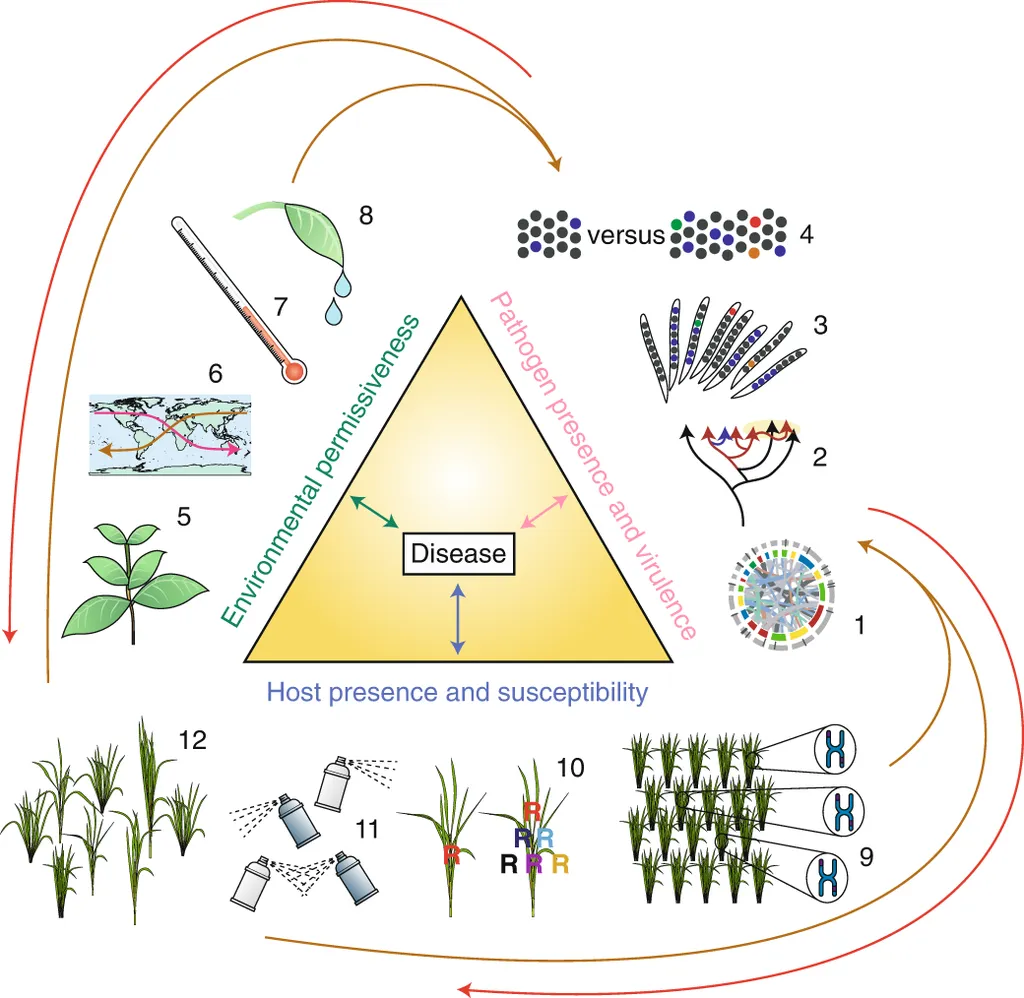In the relentless battle against fungal pathogens that threaten global crop yields, a new wave of molecular strategies is emerging, offering hope for sustainable and targeted crop protection. Researchers, led by C. A. Molina-Santiago of the Department of Plant Biology and Disease Control at the Subtropical and Mediterranean Horticulture Institute “La Mayora” (IHSM-UMA-CSIC) in Málaga, Spain, have published a highlight article in the journal *Microbial Biotechnology* (which translates to *Microbial Biotechnology* in English), outlining innovative approaches to combat fungal virulence.
Fungal pathogens pose a significant threat to global agriculture, with rising fungicide resistance and a limited availability of resistant crop cultivars exacerbating the problem. Traditional chemical control methods are becoming less effective, driving the need for novel, environmentally friendly solutions. Molina-Santiago and colleagues have identified several promising molecular strategies that could revolutionize crop protection.
One of the most precise methods highlighted in the research is RNA interference (RNAi). This technique silences essential genes in fungal pathogens, significantly impairing their virulence and development. “RNAi offers a targeted approach that can specifically disrupt the pathways fungi use to infect and damage crops,” explains Molina-Santiago. By silencing key genes, RNAi can effectively reduce the pathogen’s ability to cause disease, providing a sustainable alternative to broad-spectrum fungicides.
Another critical strategy involves inhibiting fungal efflux transporters, particularly ABC and MFS proteins. These transporters are responsible for pumping out toxic substances, including fungicides, making pathogens multidrug-resistant. By blocking these transporters, researchers have shown that it is possible to reverse resistance and restore the efficacy of existing fungicides. “Inhibiting efflux transporters is a game-changer,” says Molina-Santiago. “It allows us to extend the lifespan of current fungicides and makes our existing tools more effective.”
Additionally, the research explores the potential of genetically enhanced biocontrol agents. By engineering these beneficial microorganisms to express anti-apoptotic genes, scientists have enhanced their growth, stress resistance, and mycoparasitic activity. These enhanced biocontrol agents can better compete with and suppress fungal pathogens, providing an additional layer of protection for crops.
The integration of these strategies—RNAi technologies, efflux inhibition, and genetically enhanced biocontrol agents—paints a promising picture for the future of crop protection. “Combining these approaches allows us to create a multi-faceted defense system that is both sustainable and effective,” Molina-Santiago notes. This precision-targeted approach aligns with global efforts to achieve sustainable agriculture, reducing reliance on chemical controls and minimizing environmental impact.
The commercial implications for the agricultural sector are substantial. Farmers could benefit from reduced crop losses and lower input costs, as targeted strategies require less frequent application and are less likely to contribute to resistance development. Moreover, the environmental benefits of reduced chemical use could enhance the sector’s sustainability credentials, appealing to consumers and regulators alike.
As the agricultural industry continues to grapple with the challenges posed by fungal pathogens, the research published in *Microbial Biotechnology* offers a beacon of hope. By embracing these molecular strategies, the sector can move towards a more sustainable and resilient future, ensuring food security for generations to come. The work of Molina-Santiago and colleagues not only advances our understanding of fungal virulence but also paves the way for innovative, environmentally friendly solutions that could redefine crop protection.

